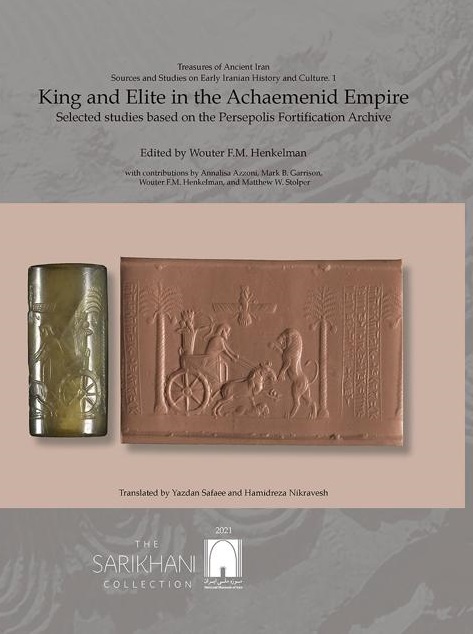
According to the National Museum of Iran, the book ” King and élite in the Achaemenid empire Selected studies based on the Persepolis Fortification Archive” has been published in Tehran. Jebrael Nokandeh, director of the National Museum, said: ” As the first volume of the series Treasuries of Ancient Iran: Sources and Studies on Early Iranian History and Culture, this volume is a translation of ten articles published in English on various occasions. He added what brings all these articles together is their common theme of the King’s network of relations with the dominant ethno-class, a group of individuals who formed the main body of power structure during the Achaemenid period. He emphasized it is also noteworthy that the focus of all these articles is on the analysis of information that the Persepolis Fortification Archive, one of the most important sources of Achaemenid history, provides.
According to Ms. Ghafouri, head of the publishing department, the publication of this book is an attempt to transfer the results of international studies to Persian speakers, given the return of a significant portion of Persepolis tablets from Chicago to the National Museum of Iran. The book consists of 10 chapters in 4 thematic sections and is published in full color in 512 pages and 500 copies.
The editor of the volume is Wouter F.M. Henkelman with contributions by Annalisa Azzoni, Mark B. Garrison, Wouter F.M. Henkelman, and Matthew W. Stolper. The chapters were translated by Yazdan Safaee and Hamidreza Nikravesh
The chapters are as follows:
The King and the royal court
Garrison, M.B. 1996, “A Persepolis Fortification Seal on the Tablet MDP 11 308 (Louvre Sb 13078)”, Journal of Near Eastern Studies 55, 15–۳۵٫
Henkelman, W.F.M. 2010, “Consumed before the King.” The Table of Darius, that of Irdabama and Irtaštuna, and that of his Satrap, Karkiš”, in: B. Jacobs & R. Rollinger (eds.), Der Achämenidenhof (Classica et Orientalia 2), Wiesbaden: 667-775.
Azzoni, A., 2017, “The empire as visible in the Aramaic documents from Persepolis”, in: B. Jacobs, W.F.M. Henkelman & M.W. Stolper (eds.), Verwaltung im Perserreich – Imperiale Muster und Strukturen / Administration in the Achaemenid Empire – Tracing the Imperial Signature, Wiesbaden: 455- 468.
Religion and royal ideology
Henkelman, W.F.M. 2011, Parnakka’s Feast: šip in Pārsa and Elam, in: J. Álvarez-Mon & M.B. Garrison (eds.), Elam and Persia, Winona Lake: 89-166.
Glimpses of the Achaemenid élite
Garrison, M.B. 1991, Seals and the Elite at Persepolis: Some Observations on Early Achaemenid Persian Art, Ars Orientalis 21, p. 1–۲۹٫
Henkelman, W.F.M. 2011, Of Tapyroi and tablets, states and tribes: the historical geography of pastoralism in the Achaemenid heartland in Greek and Elamite sources, Bulletin of the Institute of Classical Studies 54.2: 1-16.
Garrison, M.B. 2011, Notes on a Boar Hunt, Bulletin of the Institute of Classical Studies 54; 17–۲۰٫
Garrison M.B & W.F.M. Henkelman. 2020., The seal of prince Aršāma: From Persepolis to Oxford, in: C. Tuplin and J.Ma, eds., Aršāma and his world: vol. 2: bullae and seals, Oxford: 46–۱۶۶٫
The King is dead
Henkelman, W.F.M. 2003, An Elamite Memorial: the šumar of Cambyses and Hystaspes, in: W. Henkelman & A. Kuhrt (eds.), A Persian Perspective: Essays in Memory of Heleen Sancisi-Weerdenburg (Achaemenid History 13), Leiden: 101-172.
Stolper, M.W. From the Persepolis Fortification Archive Project, 4: ‘His Own Death’ in Bisotun and Persepolis, ARTA 2015.002 [28 pp.].
